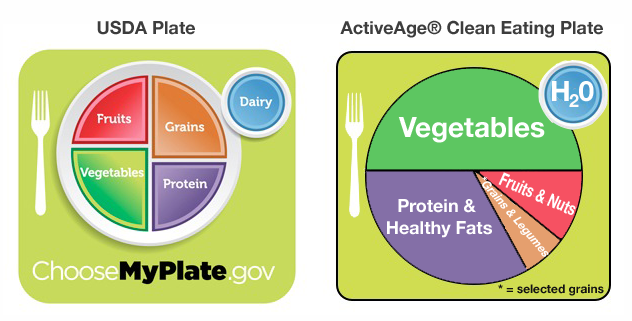What the heck do I eat?
Bottom line, that’s what people want to know.
And, it needs to be relatively simple, quick, and easy because our lives are just the opposite.
Reductionism
I read a post a while ago by Mark Sission , the author of the Primal Blueprint, about his view of exercise. In his words, “Many people, myself included, prefer streamlining fitness to obsessing over its minutiae. Although I’m no fan of their footwear, Nike’s “Just Do It” really does capture my view of what exercise should be. Find what you like doing and what works for you, and simply go do it.”
And he goes on to say, “That’s not to say I don’t pay attention to what I’m doing, because while I like to think I’m just going with the flow and doing what I enjoy, I also like knowing that what I’m doing is effective. Basically, I don’t like wasting time.”
Well, me too.
I understand the need to make exercise simple and effective. But I also know that for some people they need more instruction, guidance, and structure than “just do it.”
Similarly, my view of eating is like Mark’s view of training. I want to know what to eat / drink to maximize my performance, help control body fat, give me extra energy when I need it, and help me build a strong, flexible, agile, and fast body. Beyond that, I’ll leave the debates over whether a Paleo diet is better than Primal, or Achevore is better than The Zone, or whatever. I read this article earlier today and my head was spinning in a matter of minutes. Talk about detail.
Where to Start
Let’s start with the USDA most recent recommendations and compare it to what we suggest.
The USDA uses a plate as an image for people and although it’s tough to actually understand portion sizes, I think it generally gets the point across. What you’ll notice is Protein and Fruit are roughly the same amount with Veggies just edging out Grains. And Dairy gets it’s own place at the table (so ice cream anyone?)

Now, look at the ActiveAge Plate. The ActiveAge approach to this, which we like to call clean eating, is to boost the Veggies and Protein, cut the grains way back but add some legumes, add Healthy Fats and also cut back on fruit but add in nuts.
Why?
First of all, there’s a lot of banter about the release of insulin in response to carbohydrates, especially refined carbs, and of course that’s all true. But, insulin is released regardless of the food you eat. It’s more of a question of how much and how fast. Protein and Veggies do elicit an insulin response but not nearly as strong or fast as a Hershey chocolate bar (when a diabetic needs sugar, you give him orange juice or a candy bar not a steak or a carrot).
Second, you need protein and fat to rebuild your body during the recovery phase from training (and/or injury). I’ve written about that here and here.
Third, grains, can wreak havoc with blood sugar and how your body stores fat. You’ll notice on the ActiveAge plate, there is a small slice for limited grains and that’s Quinoa or whole grains (think long grain rice that takes 45 minutes to cook and is crunchy when you eat it). Quinoa does not create the same kind of reaction in the body as typical grains and has a lot of protein.
One slice or two of bread now and then is not a big deal. Sit on the sofa, have Big Mac with “whole grain bun” (which is never really whole grain) and French fries four nights a week, yeah, that’s problem. Some people are sensitive to gluten which causes a low grade, systemic inflammatory response. So, a food with high starch means a more rapid rise in blood sugar, increase in insulin and the likely storage of fat (unless, as I’ve now said at least three times, you train).
What to Do
Pick one thing to delete or reduce first from your plate if it looks like the USDA plate. You’ll probably notice the biggest shift in how you feel if you eliminate refined carbohydrates from your plate (if it didn’t come out of the ground and it’s white, it’s likely a refined carbohydrate – whoops – Coke is off the list too and it’s black).
And pick one thing to add. I suggest increasing your protein since many people are way under what they need. But, you could also up the veggies – hard to go wrong with a half a plate of veggies.
Now, once you have a couple of weeks under your belt, make another small change. Add water before, during, and after your meals. Eight ounces per serving is plenty.
So, when you sit down for lunch or dinner, look at your plate and see how well does it line up with the ActiveAge Plate? Hey, it’s ok. It’s a process. Probably the worst thing you can do is try to change it all on one day. Just look at your plate and be honest. Then make another change.
What’s on your plate?

